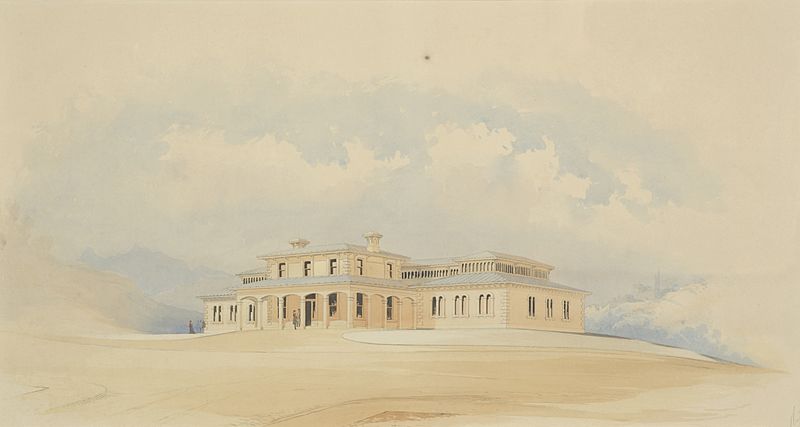Image: Colonial Museum Wellington watercolour painting from architect's plans 1865

Description: Colonial Museum Wellington watercolour painting from architect's plans 1865
Title: Colonial Museum Wellington watercolour painting from architect's plans 1865
Credit: Tepapa Colonial Museum, Wellington, circa 1865 MA_I067123
Author: George O'Brien; artist; 1865; New Zealand Overview Architectural perspective This watercolour shows the Colonial Museum, which was built in Wellington in 1865. Although it is signed in the lower right corner 'Mason Clayton, Architects, 24 1865', it is the work of Dunedin artist George O'Brien. he would have drawn it from the architects' plans. The delicate wash, here depicting clouds, is a technique characteristic of O'Brien's watercolours. The painting also shows off O'Brien's architectural and drafting training. Colonial museum William Mason and W. H. Clayton had designed the New Zealand Exhibition buildings (1865). James Hector was the exhibition's Commissioner. The two architects designed the Italianate Colonial Museum building, which Hector was to oversee as part of his new job - Director of the Colonial Geological Survey. The museum was partly prefabricated in Dunedin and then erected on the corner of Bowen and museum Streets (behind Parliament). It was not built to the original plans. The two-stories office in the front and the north and south wings, clearly visible in O'Brien's paintings, were omitted. George O'Brien O'Brien was born in Ireland and arrived in New Zealand via Australia. He settled in Dunedin where worked as a surveyor and architect. He also exhibited watercolour landscapes, taught drawing and painting, and carried out a number of commissions for architectural perspectives. O'Brien is best known for his town and landscapes. In some ways his commissioned architectural perspectives were related to these scenes, by showing the land 'idyllically settled by man'. The perspectives 'were more that just tools or advertisements' for the architects. They also expressed O'Brien's 'ideal of a New Zealand made beautiful by the efforts of men.' Te Papa
Usage Terms: Public domain
License: Public domain
Attribution Required?: No
Image usage
The following page links to this image:

